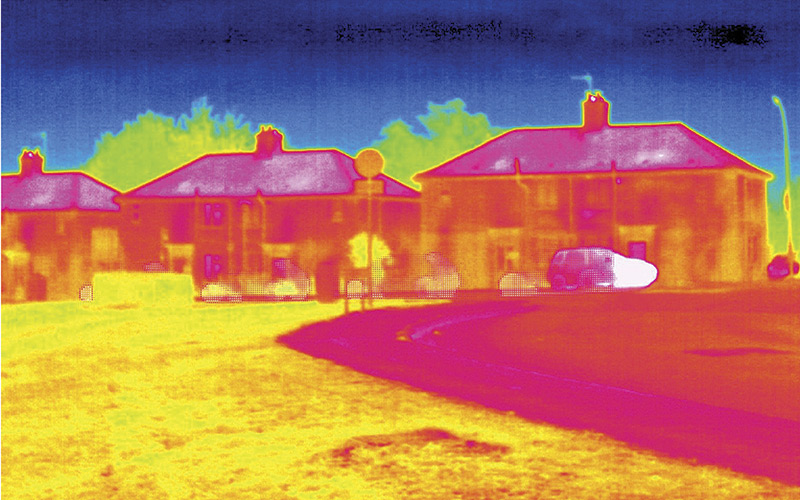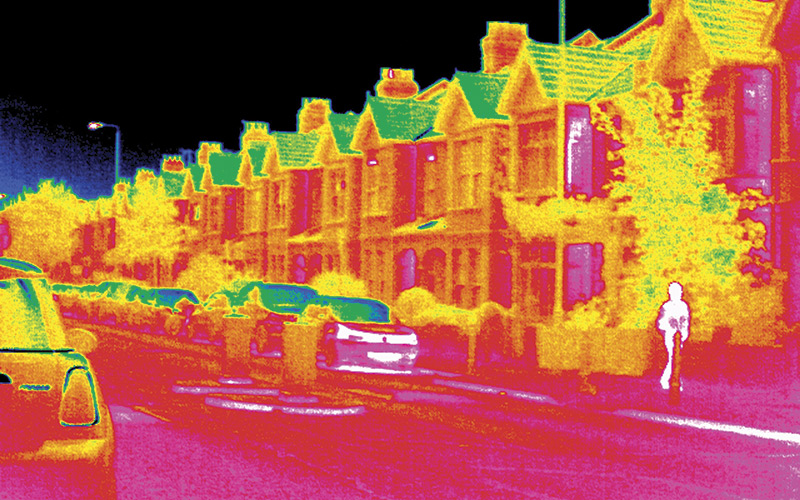The heat is on
Decarbonising the heat sector is one of the biggest policy challenges in the coming years, writes Professor Robert Lowe at UCL Energy Institute

It is increasingly clear from the latest science that the objective of stabilising the Earth’s climate requires a global transition to net-zero and then to net-negative carbon emissions. To give even a 50% chance of limiting global mean temperature rise to no more than the 1.5°C contained in the Paris Agreement, this must be done within the second half of this century (Millar et al. 2017). The implied rate of decarbonisation of the global economy would be without precedent – as, however, would the residual risk of dangerous climate change, with its multiple potential consequences and risks (IMBIE Team, 2018).
Reducing emissions
In light of the above, in April this year, Claire Perry, Minister of State for Energy and Clean Growth, asked the Committee on Climate Change (CCC) to review the UK’s climate targets – a review that is likely to both accelerate and deepen the 80% reduction target built into the Climate Change Act. The likely practical consequence will be that all the major terrestrial energy sectors, including heating for buildings and industry, will need to be completely decarbonised by or shortly after 2050, with any residual emissions offset by CO2 capture and storage.
In its latest report, Reducing UK emissions 2018 Progress Report to Parliament, the CCC shows that, while the decarbonisation of the UK electricity system is well under way, other major sectors of the UK economy have made little or no progress. Emissions from buildings have been between 80 and 120m tonnes of CO2 equivalent since the 1980s, and the structural mix of fuels used for heating has been essentially static since then, dominated by use of natural gas in boilers. Modest gains in efficiency have been largely offset by a rising population, increasing stock of buildings and higher internal temperatures (Oreszczyn and Lowe 2010).
With minor exceptions, the UK’s approach to reducing emissions from heating has been limited to raising levels of insulation in new and existing housing, improved controls and attempts to promote changes in consumer behaviour. While these can play an important role in reducing the scale of the problem and accelerating the process, they will not allow wholesale transformation of energy supply and conversion to be avoided.
Infrastructure gap
The energy technologies that are available to support decarbonisation of heat include use of decarbonised electricity either directly or, more likely, via heat pumps, replacement of natural gas with hydrogen (whether from steam reforming of natural gas with carbon capture and storage, or using ever-cheaper renewable electricity to electrolyse water), biomass and solar thermal. Heat networks are often included in this list, but do not on their own reduce the carbon intensity of heat, instead playing an enabling role.
This list of technological options is obvious and has not changed for decades. What is missing is the infrastructure and the supply chains to deliver it, and a clearly defined strategy and policy framework to guide action. Policies such as the Renewable Heat Incentive have been essentially exploratory, providing useful information to policymakers about the current status of technologies, but too small to do more than scratch the surface of the underlying problem.
 New systems architecture needed
New systems architecture needed

It is clear that the decarbonisation of heat on the timescale outlined above is too big and complex a task to be left entirely or largely to the market. Strategy, policy and planning will also be needed. Recent attempts to define a strategy for heat decarbonisation have implicitly viewed heat supply technologies as being in competition for market share with comparatively little consideration of questions around whole energy system architecture, integration and inter-vector synergies. These omissions stem in part from the whole energy system models that have been used in the Department for Business, Energy and Industrial Strategy (BEIS), by the CCC, the Energy System Catapult, the Energy Research Partnership, academia and in industry to explore policy options. Energy system architecture and associated issues are not well represented by the UK’s two main whole energy system models – UK Times model (UKTM) and the Energy System Modelling Environment (ESME). Essentially, these two models select optimal mixes of technologies within predefined architectures – but they do not optimise architecture.
The importance of this lies in the fact that key technologies exhibit significant economies of scale with respect to capital and operational costs, and that there is the potential for powerful synergies between electricity and heat – in principle allowing their complete decarbonisation, together with much of terrestrial transport. At the same time, the interplay of smart systems, transmission and storage – much of it delivered outside the electricity system – offers the promise of the flexibility needed to accommodate very large inputs from variable renewables and relatively inflexible nuclear. But the extent to which economies of scale, synergies and system-wide flexibility are realisable in practice is heavily dependent on energy system architecture. It is likely that different system architectures will perform differently under the impact of unexpected technical and cost evolution that affects the relative ranking of individual technologies. It may become possible to partially de-risk decarbonisation strategy by selection of particular energy system architectures over others – for example those that support interchangeability at the level of individual technologies, while preserving the key features of the overall structure.
 Huge task ahead
Huge task ahead

Methodologically and computationally, the above questions constitute an extremely demanding, intrinsically whole-system problem, which has only recently become the focus of research initiatives – examples include: the Energy Systems Catapult and the Institution of Engineering and Technology’s work under the Smart Systems and Heat programme, which approaches the problem from the perspective of market organisation and governance; the International Energy Agency’s Draft Annex TS3 – Hybrid Energy Networks, which plans to approach the problem from a predominantly engineering perspective, focusing on the topology and technology of interconnections between electricity, gas and heat networks; and BEIS’ Heat Strategic Options Project, which aims to develop the policies that will be needed to put the UK on the lowest cost path to heat decarbonisation.
The Engineering and Physical Sciences Research Council-funded Decarbonisation of Heat Challenge is the latest initiative in this area. Based at UCL Energy Institute, and part of the Oxford-based Centre for Research on Energy Demand Solutions, it will undertake a fundamental review of the structure of the UK’s main energy system models, first to characterise their strengths and weaknesses, with a view either to improving them or developing pragmatic work arounds to ensure that policy makers and energy researchers have access to tools commensurate with the epochal challenge that faces us all.
By Professor Robert Lowe, Deputy Director, UCL Energy Institute
Image credit | Science Photo Library






Follow us
Advertise
Free e-Newsletter